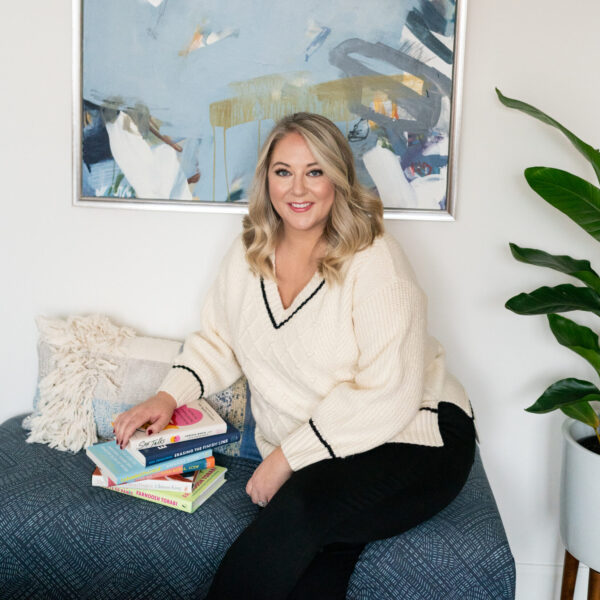
Steal A Pro’s Book Proposal Blueprint
If you’re looking to write a book and make your big book dream a reality, then look no further than the Book Proposal Blueprint – the ultimate guide to creating a winning book proposal!
If you’re like the aspiring authors I work with, you’re probably overflowing with ideas AND overwhelmed about how to start.
Take a deep breath; I’ve got you.
This post will give you the roadmap you need to plan, structure and write your book proposal so literary agents and publishers sit up and pay attention.
Plus, this proven approach will help you finish it quickly, confidently, and with much less overwhelm.
You’ll learn the following:
- what you need to know before you start writing your book proposal
- four questions to ask to write your book proposal
- what is a book proposal?
- how to write a book proposal, step-by-step, section by section
- insider bonus tips from a publishing pro (that’s me!)
Let’s get into the book proposal blueprint.
Wait! Before You Start Writing Your Book Proposal…
Let’s say you have a big idea for your non-fiction book, and you’ve even started doing some writing.
You’re in what we call the concept creation phase, and well, it’s tempting to want to forge ahead and bang out as much of your book as possible, I want you to stop!
And here’s why.
Most of my clients start out with about 10 book ideas floating around their heads, convinced it all belongs in one book.
Can you relate?
If so, I’m giving you permission and advising you to simplify. Focusing on one theme will make your book proposal clearer, more impactful, and more appealing to agents and publishers.
And it will give your book purpose and direction.
To land on this one big theme and sharpen your focus, I recommend you ask four key questions that will lay the foundation for the entire proposal.
Four Questions To Ask To Write Your Book Proposal
Question #1: What’s the problem?
As you start to think about your book, identify the one problem you’re solving. What topic are you bringing to light that people need a solution for?
This question will help you clarify your actual reader’s pain point and structure your content.
If nailing down one overarching problem sounds overwhelming, I want you to think about it at two different levels:
Level 1: The big, widespread problem
What’s the significant cultural, societal, and systemic problem you address in your book?
For example, let’s say you’re writing about trauma and addiction.
You’ll want to think about how those problems affect society at large and all of the different implications of the issue.
Level 2: The problem for your reader
Let’s take another example – the gender pay gap. How is it directly affecting your reader?
Is she a working mom hustling up the corporate ladder and still earning less than her male counterpart?
If so, what’s she thinking and feeling about her situation? Is she wondering if it even makes sense to keep the job, given the cost of child care?
Painting a detailed picture of your reader’s thoughts, feelings, beliefs, and behaviors allows you to connect with them by tapping into their emotions and their mindset.
Now that you’ve identified the problem let’s move on to the solution.
Question #2: What’s the Solution?
This question is important to think through to nail down what solution you’re offering to the problem and how you’re delivering it.
Authors communicate solutions within a book in many different ways. Here are some ideas to bottle your solution in a tangible way for the reader.
- Teach through story
- Inquiry to the reader. For example, pose questions as you describe problems or scenarios that they can relate to in their own lives.
- Proven system or framework
- A gentle Invitation for the reader to journal and reflect
In my experience, the solution usually takes the form of theory meets action.
Whatever you choose, the resolution should clearly state what the reader should do to fulfill your promise.
Question #3: Why you?
This question may seem basic, but every literary agent and publisher will ask, “Why are you the one to write this book?”, so have your answer ready!
If you’re struggling to expand on your answer, here are some prompts:
- How does your story or experience enrich or give life to this theme?
- Why are you the best one to solve this issue or bring light to this topic?
- What sparked this book idea in you?
Still stuck? Listen to this episode of my Bound + Determined podcast – Why You? The Biggest Trigger in the Book Writing Process and this follow-up episode: Journey of Reconnection: Breaking Down Sense of Self with Kristen Boice.
I promise that answering this question well will be your magic fairy dust, as it will set you apart from others writing on the same topic.
Plus, your desired audience and target market will respond when you highlight your uniqueness and relatability.
That brings us to question #4.
Question #4: Who is this for?
The difference between a winning book proposal and one that lays unread in a heap relies on you getting super clear about who you’re writing for.
First-time authors often think that their book is for everyone. And, after vetting, accepting or rejecting thousands of book proposals, I can tell you this with confidence (and proof):
A book that’s for everybody is a book that’s for nobody.
That’s why I want you to get specific about who you’re writing to. Create a character of your ideal reader, including their daily experiences, feelings, dreams, goals, pain points, and everything else about them.
Keeping that one reader in mind will ensure you won’t dilute your message or lose focus as you write.
Better yet, your book will land so strongly with your readers that you’ll reach a wider audience because they’ll become a volunteer salesforce, eager to spread the word.
That’s the secret sauce to top-notch execution.
Bonus Publishing Pro Tip:
I have all my clients start with another foundational exercise before they create their book proposal, and it’s called a social inventory.
To do a social inventory, look at your social channels (Instagram, Facebook, LinkedIn, email list, client list, course buyers, etc.) and take note of the comments and questions.
What are they most engaged in? What do they want to learn more about? This is a powerful way to do market research amongst people who are bought into your work.
Want to learn more about building a platform? Listen to this Bound + Determined podcast episode: Getting Started on Launching Your Platform.
Attention: Memoir Writers 
Writing a memoir? These questions still apply and I encourage you to think of the answers in relation to themes.
Here’s what I mean. You have the chance to think about how your story connects to emotions that the reader might be experiencing.
Because while memoir readers want to be entertained by a great story, they want to see part of themselves reflected.
So, the magic really happens when you can combine your story and connect with the reader on a universal theme.
Recapping the 4 Foundational Book Proposal Questions:
Okay, so let’s review those four questions because although they may seem simple, there’s a lot of power in getting clarity BEFORE you start your book proposal.
Question #1: What’s the problem?
Question #2: What’s the solution?
Question #3: Why me?
Question #4: Who is this for?
Now that you’ve answered those four questions, it’s time to start thinking about writing your book proposal.
Don’t panic! Here’s where my proven framework comes in!
What is a Book Proposal?
Writing your book proposal feels daunting because it’s the key to getting accepted and published.
But if you answer the questions above and take it one section at a time, all the pieces will fall into place, and you’ll be confident that you’re submitting your best work.
So before we get into writing your book proposal, let’s talk about what it is.
I want you to consider your book proposal a polished document that spells out your vision and strategy for writing and marketing your book. It should highlight your personality and expertise or unique perspective.
Below I’ll outline all the mandatory sections you need to include in your book proposal, but before we get there, I want you to keep one thing in mind.
Showing up fully in your book proposal is how you will pique the interest of the right agent for you and your book — that’s your goal.
That means in each of the mandatory sections I’ll outline in the blueprint below, you have to show up fully as yourself! Bring your personality, and don’t be afraid to radiate your energy, as that’s what will pique the interest of literary agents and publishers. Want to make a point with a hashtag or drop an F-bomb–do it!
And there’s one more thing that will make your life easier …
Your Book Proposal Blueprint – A Word of Caution
Before we get into the sections of your book proposal, I want to state something upfront in case you believe you need to have your book written first.
Literary agents and publishers will not read an entire non-fiction manuscript.
I’ve met many writers who dive into writing their full book and have to rethink their outline or rewrite it after meeting with an agent. So, if you’re in the process of writing your whole book, it’s worth it to pause.
Now, let’s get into the different sections of the book proposal and how we can pull in those four questions we tackled.
As I mentioned earlier, if you write your book proposal section-by-section, it will be all that much easier and less overwhelming.
Book Proposal Section #1: Overview 
The overview is the very first section of your book proposal, and it’s your manifesto in which you lay it all on the line. It’s your vision and your teachable moment.
It’s also where you own your expertise and confidently talk about everything amazing about you.
In other words, this is not where you want to be shy! This is where you can impress them, as it’s the first thing they’ll read.
And let me tell you, as someone who’s read 1000s of book proposals, if the book agent or publisher doesn’t love your overview, and they don’t understand who you are and what you have to offer; they’re not going to keep reading.
To write a compelling introduction, summarize the answers to the four questions above and make sure your voice shines through.
Okay, the following section is your Bio.
Book Proposal Section #2: Bio
The bio section is where you really get to brag.
And whether you’re excited or unenthusiastic, you can’t hold back because agents and publishers are buying into you as an author as much as the book concept.
Here are a few aspects to cover in your bio section:
- The work you’ve done professionally and personally that has informed your book
- The impact you’ve made and all the people you’ve touched with your experience
- Your unique, remarkable or relatable experiences, teachings, and a-ha moments
The key to making this a must-read section is including explicit detail that appeals to your reader’s emotions. And remember, don’t be shy!
Book Proposal Section #3: Target Market
This section is about who you want to read your book, and you’ve already defined the primary one in your pre-work.
I recommend my clients think about target markets in the following tiers:
Primary tier: your direct reader. This is who you want to read and impact with your book.
Let’s say you’re writing about addiction. Your primary market is the person who is addicted.
Secondary tier: who is one step removed from the primary reader? The secondary market would be people directly impacted, like a loved one, friend or supporter of the addict.
Tertiary tier: who supports or counsels this person outside their immediate circle?
Keeping with the addiction example, the third market may be a doctor, or social worker who counsels them.
Next up on your book proposal blueprint: the competitive analysis.
Book Proposal Section #4: Comparative Analysis
This part of your book proposal is referred to as a comparative or competitive analysis. Here’s where you’ll show that you’ve done your research and know exactly how your book will fit in the market and stand out.
I tell authors to think of competitive analysis as a rebuttal. It’s your opportunity to show why your book needs to get written and marketed. You’ll describe what you share with books on the market and what makes you different.
Here’s how I suggest you complete this section:
Head to Amazon and enter search terms that align with your book and theme.
See what’s selling and reviewing well, and what’s resonating with people.
But don’t just look at the best-sellers. Investigate further by reading the reviews section (goldmine!) to see:
- What left people wanting more?
- Where did other books come up short
- What do you see as missing?
- Do you have anything to add or a different take on an existing idea?
Publishers want a book with a tried-and-true feel and message, but they also want a unique spin. Nail this, and you have a winning formula.
Bonus Publishing Pro Tip:
When you walk into a publisher’s office and confidently present your market knowledge, you’ll establish yourself as a powerful partner, enabling them to see why you’re worth investing in.
Ok, so far we’ve outlined the first 4 sections of your book proposal. Let’s get into how you’ll be marketing your book.
Book Proposal Section #5: Marketing and Promotional Plan
Are you thinking, ‘Wait! I’m an aspiring author, not a marketer!’, I see you and putting this section together is easier than you think.
The marketing and promotion section of your book proposal is where you show the publisher how and to whom you’ll market your book.
In my program, the Book Proposal Blueprint, I teach my aspiring authors to assess their current and potential buyers by consulting a few places:
- Social platforms (Instagram, Facebook, LinkedIn, TikTok, etc.) — how many followers do you have on each, and what are they most engaged with
- Email list — how many people are on your email list? What are your open and click-through rates? What subjects prompt replies?
- Professional associations and/or business relationships — do you belong to any associations or have business relationships with people who would be interested in your book?
- Media contacts (reporters, podcast hosts, editors, etc.) — tap into any contacts or do some research about media professionals who may be interested in your story
- Influencers in your industry or related industries
Just by noting the specifics of your audience (number of people, level of engagement, opportunities for collaboration, etc.), you’ll quickly see avenues to pursue to market.
This exercise will give you the momentum you need to write this section because you’ll see that you have a group of people already interested in you and your work.
Pre-Launch Strategy
Your audience and platforms will help you develop a pre-launch strategy for your book.
In this area, you can draw on that data to put a timeline together that states the tactics you’ll employ at each stage of the customer journey, from pre-selling to post-publication date.
To really knock the socks off your potential agent and publisher, you can also bolster your strategy by suggesting subsequent products connected to your book. For example, self-help authors often publish a companion workbook to upsell from the book.
All of these aspects of the marketing plan are really important for the publisher to understand your commitment and your understanding of what it takes to promote a book.
Book Proposal Section #6: Chapter Summaries
Chapter summaries are the second-most important part of your proposal, and for good reason—they’re the bones of your book.
The summaries will show how your book unfolds for the reader, chapter by chapter, and how you’ll execute your overarching vision.
You’ll take all the ideas you’ve brainstormed and outline what will go in each chapter, inserting stories, teachings and exercises while maintaining your voice.
Bonus Publishing Pro Tip:
Marketing and PR teams get so lit up when they see that there’s a tangible process or take-away within a book that they can promote. Keep these actionable exercises in mind as you write your chapter summaries.
Book Proposal Section #7: Sample Chapters
It’s time to finish your book proposal strong with compelling sample chapters.
Want to run away and scream? You’re not alone!
I recommend that my clients include an introduction (6-8 pages) and a bulk chapter (15-20 pages).
These entirely written, edited and polished chapters offer should put your writing style and personality on display. As a first-time author, the sample chapters are crucial as you’ll be convincing literary agents and publishers that you’re deserving of a book deal.
Bonus Publishing Pro Tip:
Submit a chapter that most effectively introduces you (the intro) and your theory (the bulk chapter). The chapters should set up the promise and show how you’ll deliver on it.
Note that every once in a while, you’ll also see an agent request a third chapter, and that’s because they want to see a chapter from further along in the book.
Wrapping Up: Your Book Proposal Is Done! 
Once you’ve completed your book proposal, including all of the sections outlined above, you’re likely looking at 60- 70 pages.
I know it sounds like a lot, but I promise when you tackle section by section and keep applying those clarity questions to every area of the proposal, it will come naturally and, dare I say, more ease.
I’ve covered a lot in this post, but if there’s one thing you take away from this book proposal blueprint, it’s how important it is to show up as yourself fully.
To get recognized, the publisher and the agent need to have an absolute feel for who you are because that will make or break it for you.
If you’re navigating your book journey, be sure to check out my publishing roadmap here, which is an outline of what I’ve covered in this post. Download it and refer to it as you get planning and writing.
And if you’d like more hands-on support, check out my Book Proposal Blueprint program. In this 10-week immersive program, I personally guide you through creating a book proposal that’ll have agents begging to sign you and publishers eager to bring your book to life.
Sending you Big Book Energy!
Share this post!
The Truth About Imposter Syndrome & Inspiration
So, if you’re ready to kick imposter syndrome to the curb and grab your book-writing journey by the horns, you’re in the right place.
Rethinking Bestseller
Becoming a bestseller is a wonderful accomplishment, but for many who seek to see their books on shelves, it’s not the end-all-be-all, and for a vast majority, it’s a goal that can be more harmful than good.
Write a Book in 2024: Activate Your Plan
Activate your plan to write a book in 2024 by taking small, intentional steps that are proven to create momentum and inspiration.
Need a roadmap to publishing your book?
I’ve got you covered!
Enter your name and e-mail below and I’ll send you my roadmap for developing your book idea. You’ll learn how to attract the right agents and publishers, and be on your way to getting your book out into the world!




